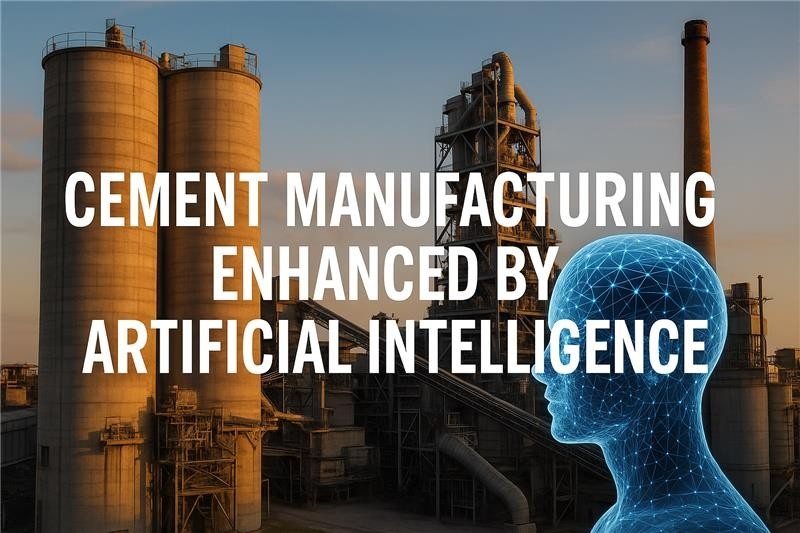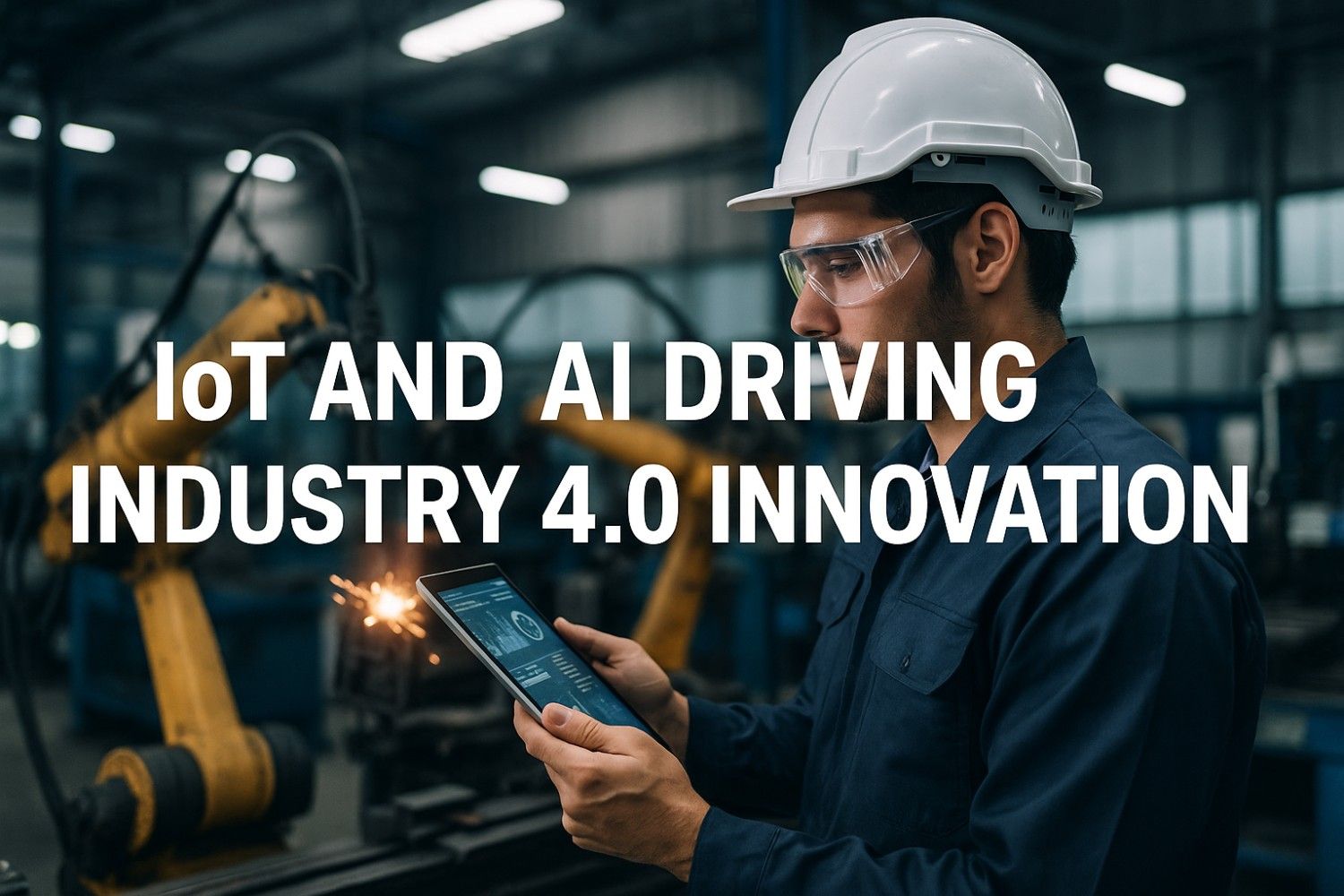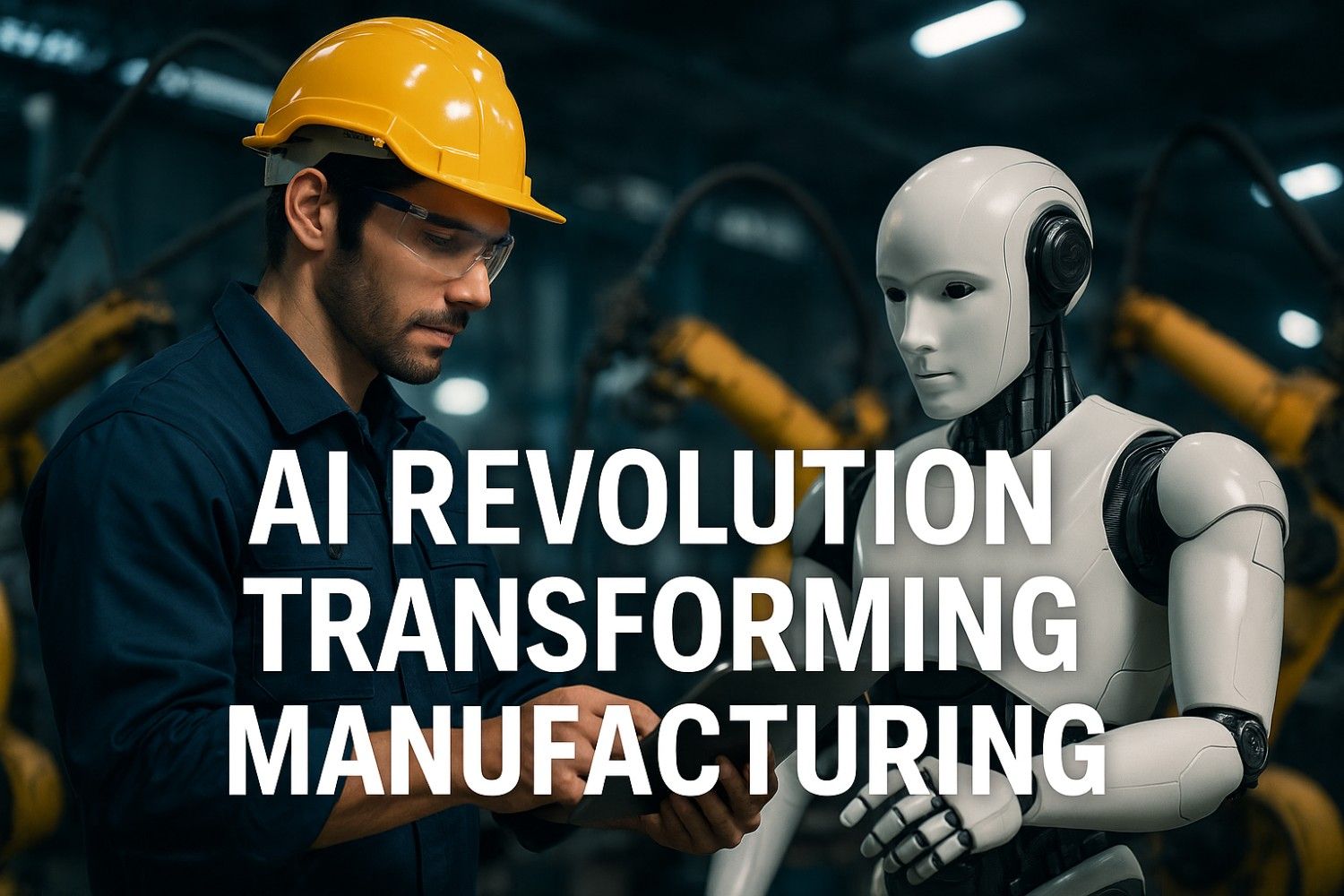The rise of predictive analytics in manufacturing represents a transformative shift from reactive to proactive operations. Powered by artificial intelligence and machine learning, predictive analytics enables manufacturers to anticipate equipment failures, optimize processes, and make data-driven decisions that directly impact operational efficiency and profitability in the era of Industry 4.0.
Leading platforms like iFactoryapp are revolutionizing manufacturing operations by providing comprehensive predictive analytics solutions that integrate seamlessly with existing systems, delivering actionable insights that reduce downtime, improve quality, and drive cost savings across the entire production environment.
Average reduction in unplanned downtime
Maintenance cost savings achieved
Prediction accuracy for equipment failures
Months to achieve positive ROI
What is Predictive Analytics?: Data-Driven Insights
Predictive analytics is a sophisticated data analysis methodology that leverages historical data, statistical algorithms, and machine learning techniques to identify patterns and forecast future outcomes in manufacturing operations. Unlike traditional reactive approaches that address problems after they occur, predictive analytics enables manufacturers to anticipate issues days or weeks in advance, transforming raw operational data into actionable intelligence that drives proactive decision-making.
In manufacturing contexts, predictive analytics processes vast amounts of data from IoT sensors, equipment logs, quality control systems, and production records to generate insights about equipment health, process optimization opportunities, quality trends, and production performance. Advanced algorithms continuously analyze this data to identify subtle patterns and correlations that human analysis might miss, enabling early detection of developing issues before they impact operations.
Real-Time Data Intelligence
Comprehensive sensor networks and IoT platforms collect and analyze operational data continuously from equipment, processes, and quality systems, providing instant visibility into production performance.
Pattern Recognition
Advanced algorithms identify trends, anomalies, and correlations within complex datasets that indicate developing equipment issues, quality problems, or process inefficiencies.
Predictive Modeling
Machine learning models forecast future events, equipment failures, quality outcomes, and production performance with increasing accuracy as they learn from additional data over time.
Why It Matters: Addressing Critical Downtime Issues
Unplanned downtime remains one of the most significant and costly challenges facing modern manufacturers, with financial impacts that can reach tens of thousands of dollars per hour for large operations. Traditional reactive maintenance approaches often result in unexpected equipment failures that disrupt production schedules, cause missed delivery deadlines, and damage customer relationships while eroding profit margins through cascading operational and financial consequences.
The total cost of production interruptions extends far beyond immediate repair expenses. Manufacturers face overtime labor costs for emergency repairs, expedited shipping fees to maintain customer commitments, lost sales opportunities from capacity constraints, potential penalties for late deliveries, and quality issues from rushing production to recover from delays. Additionally, reactive approaches to quality management often allow defects to accumulate before detection, resulting in expensive recalls or extensive rework that could have been prevented through early intervention.
Predictive analytics addresses these critical pain points by providing manufacturers with the foresight needed to take preventive action before issues impact operations. By identifying potential equipment failures days or weeks in advance, operations teams can schedule maintenance during planned downtime periods, order replacement parts proactively to minimize repair time, and adjust production schedules strategically to minimize disruption to customer commitments and overall productivity.
Benefits: Predictive Maintenance and Cost Reduction
The implementation of predictive analytics delivers measurable value across multiple dimensions of manufacturing operations, from equipment reliability and product quality to operational efficiency and cost reduction. Organizations implementing comprehensive predictive analytics strategies achieve remarkable improvements that compound over time as systems accumulate data and AI algorithms become more sophisticated through continuous learning.
Predictive Maintenance Excellence
Predictive maintenance represents one of the most compelling and immediately valuable applications of analytics in manufacturing environments. By continuously monitoring equipment health indicators including vibration patterns, temperature fluctuations, energy consumption profiles, acoustic signatures, and other operational parameters, predictive models can identify subtle degradation patterns that precede mechanical failures by days or weeks.
This capability enables maintenance teams to intervene precisely when needed—avoiding both premature part replacement that wastes resources and catastrophic breakdowns that halt production. Leading manufacturers report maintenance cost reductions of 25-30% after implementing predictive analytics, along with significant improvements in equipment uptime that directly increase production capacity. The technology also extends overall asset lifespans by 20-40% by ensuring optimal operating conditions and preventing cascading failures that can damage related components.
Comprehensive Cost Reduction
Beyond direct maintenance savings, predictive analytics drives cost efficiency across the entire manufacturing operation through multiple complementary mechanisms. Energy consumption optimization algorithms can reduce utility expenses by 10-20% through intelligent load balancing, equipment scheduling aligned with utility rate structure, and identification of inefficient operating modes that waste energy without improving production output.
Inventory management benefits substantially from accurate demand forecasting and production optimization, minimizing both stockouts that lose sales and excess inventory that ties up working capital. Quality-related cost savings emerge from early defect detection and proactive process optimization that prevents quality issues before they occur. Labor productivity improves significantly as maintenance and operations personnel spend less time fighting fires and more time on value-adding continuous improvement activities.
Reduced Downtime
Minimize unplanned production stops through early warning systems that detect potential failures before they occur, enabling scheduled maintenance during planned downtime periods.
Improved Quality
Identify quality issues in real-time and adjust production parameters automatically to maintain specifications, reducing defect rates by 40-60% and eliminating costly rework.
Resource Optimization
Optimize material usage, energy consumption, and labor allocation based on predictive demand patterns and production requirements, reducing waste and operational costs.
Transform Your Manufacturing with Predictive Intelligence
Discover how iFactoryapp enables comprehensive predictive analytics capabilities that revolutionize operations through artificial intelligence and real-time optimization.
Book a Demo Contact SupportHow It Works: The Analytics Process
The predictive analytics process in manufacturing follows a systematic, data-driven approach that combines data science methodologies, manufacturing domain expertise, and continuous improvement principles. Understanding this comprehensive process helps organizations implement analytics solutions effectively while maximizing return on investment and minimizing implementation risks through strategic phasing and validation.
Deploy IoT sensors across critical equipment and integrate existing systems (MES, SCADA, quality systems) to capture comprehensive operational data including machine performance metrics, environmental conditions, quality parameters, and production statistics in real-time.
Clean, normalize, and structure raw data streams to ensure quality and consistency. This includes removing sensor noise, handling missing values, synchronizing timestamps from multiple sources, and creating unified data models.
Build and train machine learning models using historical data to identify patterns, relationships, and leading indicators of equipment failures, quality issues, and process inefficiencies. Models are validated against known outcomes to ensure accuracy.
Apply trained models to current operational data to generate real-time predictions about future events, equipment health status, quality outcomes, and production performance. Deploy predictive capabilities into production systems with appropriate user interfaces.
Alert relevant personnel about predicted issues through dashboards and notifications, recommend specific corrective actions, track outcomes, and collect feedback to continuously improve model accuracy through ongoing machine learning and refinement.
For deeper insights into how AI-powered predictive maintenance transforms manufacturing operations through advanced analytics and machine learning, explore our comprehensive guide on Predictive Maintenance with AI.
Case Studies: Real Factory Success Stories
Manufacturers across diverse industries have achieved remarkable, measurable results through predictive analytics implementation, demonstrating the technology's versatility and substantial impact on operational and financial performance. These real-world success stories illustrate how predictive analytics delivers value across different manufacturing contexts, from high-volume automotive production to precision electronics manufacturing and process industries.
Automotive Component Manufacturer Transformation
A leading automotive components manufacturer producing powertrain systems across multiple facilities implemented comprehensive predictive analytics using iFactoryapp to address chronic unplanned downtime issues and quality variability that were impacting customer satisfaction and profitability. The implementation monitored critical equipment including robotic welders, CNC machining centers, stamping presses, and automated assembly systems.
Reduction in unplanned downtime
Annual cost savings achieved
Overall equipment effectiveness improvement
Reduction in quality defects
Electronics Manufacturing Quality Excellence
A semiconductor fabrication facility deployed predictive quality analytics to monitor cleanroom conditions, equipment performance, and process parameters in their highly sensitive manufacturing environment. The system integrated data from hundreds of process sensors to predict quality outcomes before products completed manufacturing, enabling proactive interventions that prevented defects.
Reduction in quality defect rate
First-pass yield achievement
Increase in effective production capacity
Annual value from quality improvements
Discover additional success stories and examples of how AI drives manufacturing efficiency improvements across industries in our detailed article on AI Manufacturing Efficiency.
Challenges: Overcoming Data Complexity
While predictive analytics offers tremendous benefits and proven ROI, successful implementation requires careful attention to several critical challenges that can impact project success, time-to-value, and long-term sustainability. Understanding these obstacles and developing comprehensive strategies to address them is essential for realizing the full potential of predictive analytics while managing investment risk and organizational change effectively.
Data Quality & Integration Complexity
Ensuring consistent, accurate data from diverse sources across legacy and modern systems requires robust integration strategies, data governance frameworks, and systematic data quality management programs.
Skills & Expertise Gaps
Building internal capabilities in data science, machine learning, industrial IoT, and domain expertise necessitates comprehensive training programs or strategic partnerships with experienced technology providers.
Infrastructure & Technology Requirements
Deploying sensors, edge computing devices, networking infrastructure, and cloud platforms to support real-time analytics requires upfront capital investment and ongoing operational expenses.
Change Management & Adoption
Transitioning from traditional reactive practices to data-driven predictive decision-making requires cultural change, stakeholder engagement, and clear communication of benefits and expectations.
Model Accuracy & Confidence Building
Building organizational confidence in predictive models through rigorous validation, transparent explanations, and demonstrated accuracy is essential for user adoption and effective utilization of insights.
Cybersecurity & Data Protection
Protecting sensitive operational data and ensuring secure communication between connected devices requires comprehensive security architectures, protocols, policies, and continuous monitoring.
Organizations that address these challenges systematically through phased implementation approaches, strong executive sponsorship, comprehensive stakeholder engagement, and partnerships with experienced technology providers like iFactoryapp achieve faster time-to-value and sustainable long-term benefits from predictive analytics investments while minimizing implementation risks.
Future: Analytics Growth and Industry 4.0 Evolution
The evolution of predictive analytics continues to accelerate rapidly, driven by breakthrough advances in artificial intelligence algorithms, edge computing capabilities, industrial IoT technologies, and cloud platforms. Several transformative emerging trends are reshaping the future of manufacturing analytics and dramatically expanding the possibilities for operational optimization, autonomous operations, and competitive differentiation.
Digital Twins and Advanced Simulation
Virtual replicas of physical assets, processes, and entire production systems enable manufacturers to test operational scenarios, optimize parameters, predict outcomes, and validate improvements without disrupting actual operations or risking production quality. These sophisticated digital twins continuously learn from real-world operational data, becoming increasingly accurate representations that support strategic decision-making, training, and innovation.
Autonomous and Self-Healing Operations
Predictive analytics is rapidly evolving toward prescriptive and fully autonomous systems that not only forecast potential issues but automatically implement corrective actions and optimize operations without human intervention. Self-healing manufacturing systems detect anomalies, diagnose root causes, and implement preventive measures autonomously, moving toward truly lights-out manufacturing that operates continuously with minimal human oversight.
End-to-End Supply Chain Integration
Predictive analytics capabilities are expanding beyond individual factory operations to encompass entire value chains, forecasting demand fluctuations, supplier performance issues, logistics disruptions, and market changes. This comprehensive end-to-end visibility enables coordinated optimization across suppliers, manufacturers, logistics providers, and customers for unprecedented supply chain resilience and responsiveness.
Sustainability and Environmental Optimization
Environmental considerations are becoming integral to predictive analytics applications as sustainability becomes a competitive imperative. Advanced systems forecast energy consumption patterns, optimize resource utilization, predict environmental impacts, and identify opportunities to reduce carbon footprints while maintaining or improving production efficiency and profitability.
The convergence of 5G connectivity enabling ultra-low latency communication, edge AI processing providing sophisticated intelligence directly on equipment, and quantum computing promising breakthrough optimization capabilities will enable real-time analytics at unprecedented scale and sophistication. Learn more about these transformative technologies and their implications in our forward-looking exploration of the Future of Industry 4.0.
Key Future Trends in Predictive Analytics:
- Digital Twin Maturity: Virtual commissioning, scenario testing, and risk-free optimization
- Autonomous Operations: Self-optimizing systems with minimal human intervention
- 5G Connectivity: Ultra-low latency enabling real-time coordination and control
- Edge AI Processing: Sophisticated intelligence deployed directly on equipment
- Supply Chain Analytics: End-to-end visibility and predictive coordination
- Sustainability Integration: Carbon footprint prediction and environmental optimization
- Quantum Computing: Breakthrough optimization of complex manufacturing systems
Conclusion: Begin Your Predictive Analytics Journey
Predictive analytics represents a transformative opportunity for manufacturers seeking to enhance operational efficiency, reduce costs, improve quality, and maintain competitive advantage in an increasingly digital and data-driven industrial landscape. By leveraging AI-driven insights to anticipate problems before they impact operations, optimize processes continuously, and make data-informed strategic decisions, organizations can achieve unprecedented levels of performance, reliability, and profitability.
The journey toward comprehensive predictive manufacturing begins with understanding your specific operational challenges and opportunities, assessing data infrastructure readiness and maturity, and selecting the right technology partners to guide successful implementation. Start strategically with high-impact use cases that demonstrate value quickly, build organizational confidence and capabilities systematically, and expand methodically to build comprehensive predictive analytics capabilities that deliver sustainable competitive advantage.
Try iFactoryapp free trial now and discover how predictive analytics can revolutionize your manufacturing operations, eliminate costly downtime, optimize quality and efficiency, and position your organization for long-term success in the era of smart manufacturing and Industry 4.0!
Frequently Asked Questions
How much does it cost to implement predictive analytics in manufacturing?
Implementation costs vary significantly based on facility size, existing infrastructure maturity, and scope of deployment across equipment and processes. Small-scale pilot programs can begin at $50,000-$100,000 for focused applications like predictive maintenance on critical equipment, while comprehensive enterprise-wide implementations may range from $500,000 to several million dollars for large multi-facility operations. However, most manufacturers achieve positive ROI within 12-18 months through measurable benefits including reduced unplanned downtime, maintenance cost savings, quality improvements, and energy optimization that typically deliver 3-5x return on investment over three years.
What data is required for effective predictive analytics?
Effective predictive analytics requires comprehensive historical operational data including equipment sensor readings (vibration, temperature, pressure, flow rates), maintenance records and work orders, production logs and quality metrics, process parameters and setpoints, and environmental conditions. The more comprehensive, consistent, and high-quality the data, the more accurate and reliable the predictions. Most systems need at least 6-12 months of historical data for initial model training and validation, though some simpler applications can begin with less data and improve accuracy as additional information accumulates over time through continuous learning.
Can predictive analytics work with legacy manufacturing equipment?
Yes, predictive analytics can absolutely be applied to legacy equipment that lacks built-in connectivity or sensors through cost-effective retrofit approaches. Modern edge computing devices and wireless IoT sensors can be installed on existing equipment to collect operational data including vibration, temperature, acoustic signatures, and power consumption without requiring equipment replacement or extensive modifications. Many successful implementations strategically combine data from modern connected systems with retrofit sensors on critical legacy assets, gradually expanding coverage based on ROI priorities and budget availability while maximizing the useful life of existing capital investments.
How accurate are predictive analytics forecasts in real manufacturing environments?
Prediction accuracy depends primarily on data quality, model sophistication, application complexity, and domain expertise in model development. Well-implemented systems leveraging platforms like iFactoryapp typically achieve 85-95% accuracy for equipment failure prediction with 1-3 week advance warning, 90-98% accuracy for quality defect detection and prevention, and 80-90% accuracy for production performance forecasting. Importantly, accuracy improves continuously over time as models learn from additional operational data and feedback, with many systems achieving 95%+ accuracy within 12-18 months of deployment as they accumulate experience and domain knowledge is refined.
What skills and expertise are needed to successfully manage predictive analytics systems?
Comprehensive predictive analytics programs require a strategic combination of data science and machine learning expertise, manufacturing operations and process domain knowledge, IT infrastructure and systems integration capabilities, and change management skills to drive organizational adoption. However, modern cloud-based platforms like iFactoryapp provide intuitive user-friendly interfaces, pre-built analytics models, and automated workflows that enable operations personnel to leverage sophisticated analytics capabilities without deep technical data science expertise, while offering advanced configuration and customization options for organizations with dedicated analytics teams who want to develop custom models and applications.
Ready to Transform Your Manufacturing with Predictive Analytics?
Join leading manufacturers worldwide who are leveraging iFactoryapp to implement comprehensive predictive analytics capabilities that deliver measurable improvements in efficiency, quality, reliability, and profitability.
Book a Demo Contact Support






